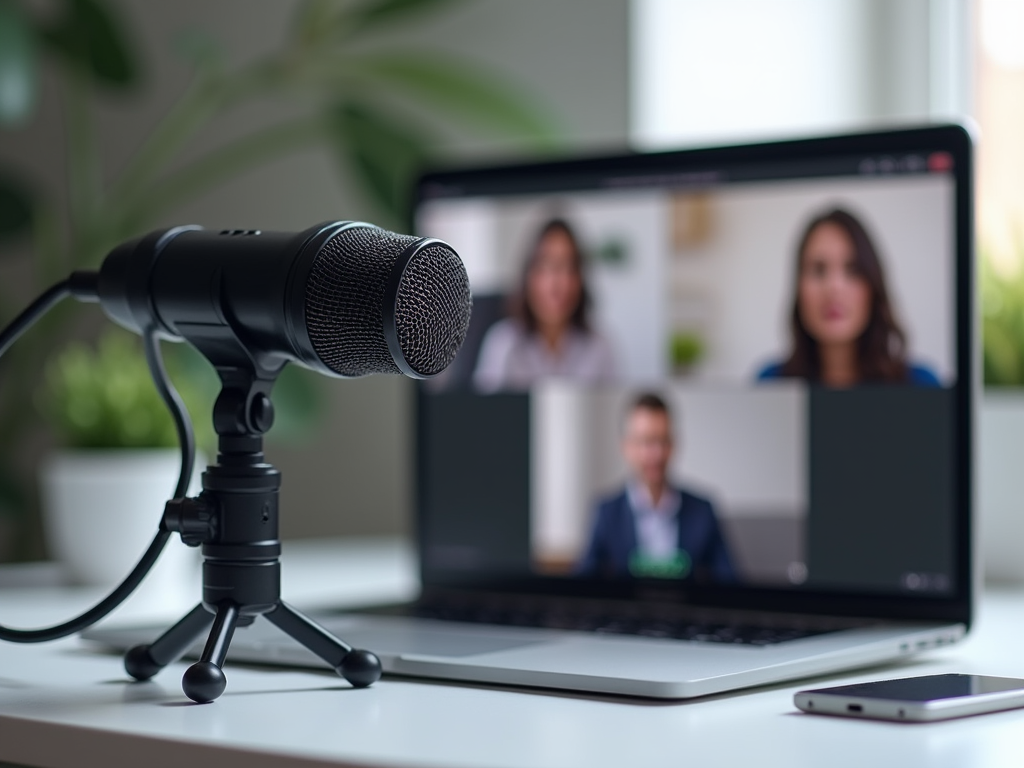In a world where digital communication reigns supreme, webinars offer an exceptional platform for sharing knowledge and connecting with your audience. Whether you’re an educator, a business leader, or an influencer, the ability to present your ideas in a compelling manner can make a significant difference. While live interactions are valuable, the magic doesn’t end when the session concludes. The power of a well-recorded webinar lies in its potential to be a lasting resource for attendees and new viewers alike. But how do you ensure that your webinar is not only engaging but also worth replaying? This article will explore key strategies for effectively recording a webinar that captivates and informs.
First and foremost, planning sets the foundation for a successful recording. By outlining your objectives, you establish a directive for your content. A clear purpose ensures that your message resonates with the audience and provides them with actionable insights. Another pivotal element is the choice of topic, which should reflect the interests of your viewers. Utilizing tools like surveys or audience polls prior to the event can tailor your presentation to their needs, making it more impactful.
Understanding the Importance of a Webinar

The significance of webinars extends beyond live events; they become a repository of valuable content that can be accessed repeatedly. This constant availability amplifies the value of your initial investment in time and resources. A well-executed seminar that’s recorded properly not only serves the primary attendees but can also engage new followers and expand your reach. Therefore, the focus should be on delivering quality content that addresses the audience’s needs while encouraging repeat views.
Planning Your Webinar

Planning is the skeletal structure that supports the entire process of creating an engaging webinar. It requires a comprehensive understanding of your audience’s expectations and the goals you wish to achieve. Consider these factors when planning:
- Establish your primary objective: What do you want the audience to gain?
- Identify the target audience: Who are you speaking to, and what are their needs?
- Schedule your webinar at a convenient time to maximize attendance.
Setting Clear Objectives
Your objectives will define the measures of success for your webinar. By maintaining a clear vision, you can maintain focus and ensure each element of the presentation serves that purpose. Therefore, the moments you share should contribute to meeting those specific goals. A well-set objective aids in keeping your presentation succinct and engaging, minimizing irrelevant distractions.
Choosing the Right Topic
In the realm of content creation, selecting a topic that resonates is paramount. It’s essential to choose subjects that not only interest your audience but also provide them with value. When you present content that addresses your viewers’ pain points, you establish yourself as an authority in your niche. The more relevant your topic, the greater the likelihood that your webinar will be worth sharing and revisiting.
Choosing the Right Tools
The tools you utilize can make or break your webinar experience. Quality recordings hinge on using the correct software and hardware configurations. For most presenters, investing in quality equipment is not a luxury but a necessity. A selection of software options, including Zoom, GoToWebinar, and Webex, provide excellent functionality. Here’s a brief comparison of each platform:
| Platform | Key Features | Ideal Uses |
|---|---|---|
| Zoom | Screen sharing, breakout rooms, cloud recording | Business meetings, educational sessions |
| GoToWebinar | Audience engagement tools, analytics reports | Large-scale webinars, tracking performance |
| Webex | High-quality audio, event support | Corporate events, webinars with high attendee numbers |
Creating Engaging Content
The content you create is the very soul of your webinar. Structuring presentations effectively ensures that your message is not lost amidst distractions. Begin with a captivating introduction that hooks your audience, followed by clear segments addressing your core messages. Additionally, visual elements have proven to enhance engagement. Consider incorporating slides, infographics, or videos to keep the audience visually stimulated.
Visual aids play a crucial role in breaking down complex ideas and maintaining interest. Research indicates that audiences retain information better when it is presented visually. Therefore, invest time in designing slides that are not only informative but also aesthetically pleasing. Engaging visuals can transform an otherwise bland presentation into a memorable experience.
Interacting with Your Audience
Audience interaction can transform your webinar from a monologue into a dynamic, engaging dialogue. Implementing strategies like live polls and Q&A segments helps maintain audience attention and encourages participation. Interaction fosters a sense of community among attendees, making them feel valued and heard. Here are some effective strategies to facilitate audience engagement:
- Start with an icebreaker question to set a friendly tone.
- Utilize chat features to encourage real-time feedback and discussion.
- Call on specific attendees to share their thoughts, making it personal.
Addressing questions is an opportunity to consolidate learning and clarify doubts. Designating a specific time during the webinar for questions helps keep the presentation organized. Summarizing questions can also demonstrate attentiveness and ensure that other audience members benefit from the answers provided.
Post-Webinar Actions
After your session, recording and promoting it is just as important as the live presentation. Editing the recorded webinar is crucial; removing unnecessary segments and enhancing audio and visual quality can significantly elevate viewer experience. Utilize editing tools to ensure the final product reflects the professionalism you aim for during live sessions. Once polished, consider these promotional tactics:
- Leverage email lists to share the replay with registered attendees.
- Post highlights on social media platforms to attract viewers.
- Create a dedicated landing page featuring the replay to capture leads.
Conclusion
Recording a webinar worth replaying involves meticulous planning, the selection of suitable tools, creating engaging content, and proactive post-event follow-ups. By implementing the strategies discussed in this article, you can elevate your webinars and transform simple presentations into lasting, valuable resources. This can lead to ongoing engagement, helping you to build a loyal audience team and generate future opportunities for growth and learning.
Frequently Asked Questions
- What equipment do I need to record a webinar? You need a reliable microphone, a high-quality camera, and webinar recording software.
- How long should my webinar be? Ideally, a webinar should be between 30 to 60 minutes to maintain audience attention.
- Can I edit my webinar recording? Yes, editing software can enhance your recording by removing unnecessary parts and improving sound quality.
- How can I promote my recorded webinar? Utilize email marketing, social media, and your website to share the replay link with your audience.
- What makes a webinar engaging? An engaging webinar includes interactive elements, compelling visuals, and clear, well-structured content.




